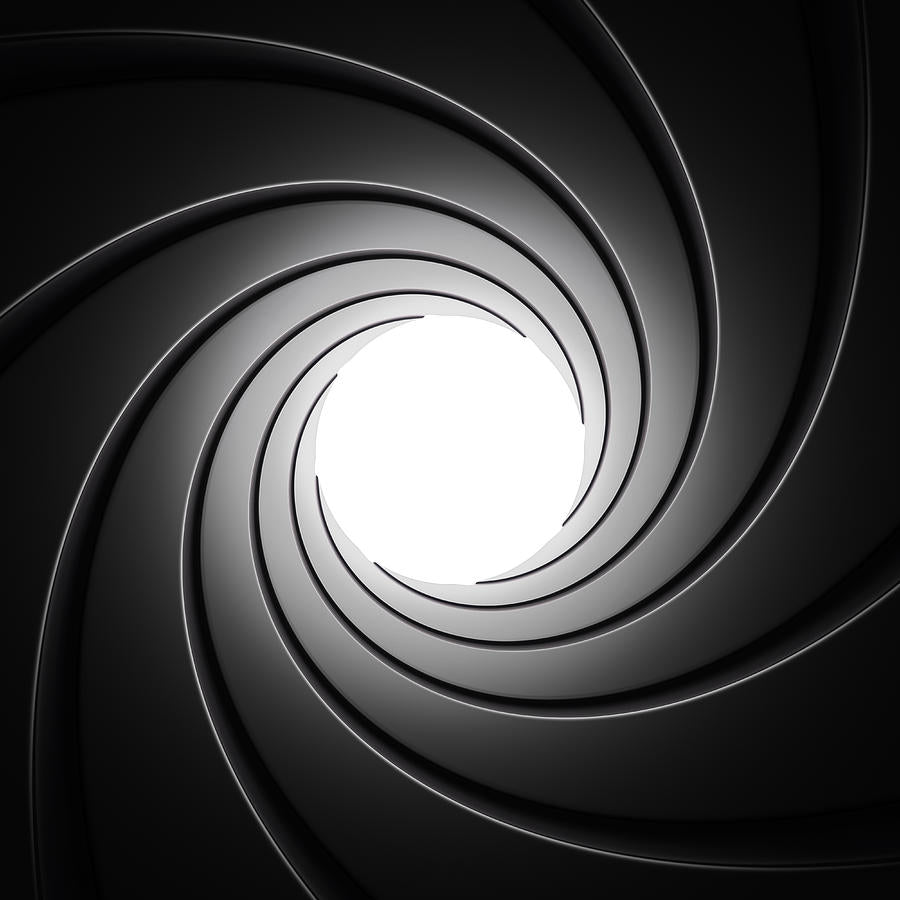Free Shipping on Canadian orders over $175
Free Shipping on Canadian orders over $175

Get This to the Lab: The Magic Bullet in Police Procedurals
September 14, 2023 5 min read
Ah, the classic crime drama scene. A detective saunters into a room, picks up a stray bullet or casing, and suddenly has a treasure trove of information about the firearm used. It's compelling television but pretty far removed from the reality of forensic ballistics. So take a moment to put the sunglasses back on, utter your favourite pun and we'll take a look at the real science. (Yeeeeeeeeeeeaaaaaah!)
The Basics
At its core, ballistics is the science of projectiles and their motion. It has both internal and external aspects—how bullets behave within the firearm and once they've left the barrel. Forensic ballistics is a highly specialized subfield, marrying the mechanics of ballistics with the nuances of crime scene investigations. It's more than just looking at a bullet; it's about piecing together a story based on evidence.
Anatomy of a Bullet: More Than Just Lead
For those who already know the basics, bullets are made up of several components: the tip or projectile, the casing, the primer, and the powder. Forensic experts don't just look at one component; they meticulously examine each one to understand the firearm used. However, the crown jewel in these investigations often lies in the striations or unique markings a gun barrel imprints on a bullet.
The Nitty-Gritty of Forensic Ballistics
Unique but Not Indelible
As Dr. Michael Haag notes in his book "Shooting Incident Reconstruction," each gun barrel has its own set of unique microscopic markings, a bit like fingerprints for humans. These markings are imprinted on the bullet as it passes through the barrel. But here's the catch—these striations can change. Wear and tear, barrel replacements, or re-rifling can all alter these supposedly "unique" markings.
It's Not All About the Bullet
It's tempting to think that the bullet tells the whole story, but it doesn't. As mentioned in "Forensic Science Handbook" by Elizabeth Morris, firing pins and chamber marks also leave imprints on the casing. While these can be useful, they're not as reliable for identification purposes as striations. Firing pins are easily interchangeable, and chamber marks often vary between shots.
Busting the Myths of TV Procedurals
Speedy Analysis? Hardly
Television often suggests that bullet analysis is a quick task, solved between commercial breaks. This is far from the truth. According to a National Research Council report, "Forensic tools, including ballistics, require careful and time-consuming analysis." You're looking at days and possibly even weeks for the entire analysis.
The Infallible Science Trope
Many TV shows and movies give the impression that forensic science is an exact, unerring field where evidence unequivocally leads to a single, irrefutable conclusion. However, the truth is far less black and white. Even advanced scientific techniques have their limitations and are susceptible to various kinds of errors.
Human error can come into play at multiple stages of ballistic analysis. For example, the handling of the bullets, the operation of microscopic equipment, and the interpretation of the striations can all introduce room for error. Moreover, experts may have differing opinions on the same set of striations, as the patterns are often complex and can appear similar to those made by other firearms.
Additionally, the condition of the evidence can significantly impact its analysis. A bullet that has gone through multiple surfaces or one that has fragmented will be much harder to analyze accurately. Even environmental factors like corrosion can affect the markings on the bullet, leading to less reliable results.
This doesn't mean that forensic science isn't a vital tool in criminal investigations; it most certainly is. However, it's crucial to remember that it's not an infallible magic wand but a discipline that requires meticulous work, careful interpretation, and, importantly, corroborative evidence for the most accurate and reliable outcomes.
One Bullet, One Gun? Nope
While TV dramas may have you believe that each gun leaves an entirely unique imprint, that's not always the case. Inconsistent manufacturing processes and bullet fragmentation can significantly complicate identification. Therefore, it's not a one-to-one match as often portrayed.
The Future: Where Forensic Ballistics Is Headed
The field of forensic ballistics is undergoing a transformative shift thanks to technological advancements like advanced 3D imaging and machine learning algorithms. While traditional methods have relied on expert observation and manual comparison of bullet striations, these emerging technologies promise to increase both the speed and accuracy of ballistic analyses.
3D Imaging
Advanced 3D imaging has revolutionized the way forensic experts analyze ballistic evidence. Traditionally, two-dimensional comparison microscopes were used to evaluate the microscopic lines and grooves on bullets, a labor-intensive and highly skilled task. However, 3D imaging techniques like confocal microscopy allow for the creation of highly detailed three-dimensional models of a bullet's surface. These models can then be rotated, zoomed, and examined from multiple angles, providing a far more comprehensive analysis than 2D images. According to a study published in "Forensic Science International," 3D imaging significantly improves the identification of firearms by capturing minute details that might be missed in traditional 2D imaging.
Machine Learning Algorithms
Machine learning adds another layer of sophistication to ballistic analysis. These algorithms are designed to "learn" from the data they process, which means they become more effective with each piece of analyzed evidence. Unlike human experts, who may suffer from cognitive biases or errors of judgment, machine learning algorithms provide consistent, unbiased analysis, which is crucial in forensic investigations. In fact, according to a report by the National Institute of Justice, machine learning techniques have shown promise in increasing the accuracy rate of identifying bullets to the guns that fired them.
Future Prospects
As technology continues to advance, the integration of more sophisticated machine learning algorithms and higher-resolution 3D imaging techniques will likely occur, making the identification process even more reliable and swift. While these technologies won't eliminate the need for human expertise, they'll serve as invaluable tools that can assist forensic experts in making more accurate identifications, thus improving the quality of evidence provided in legal proceedings.
The future of forensic ballistics will likely see a fusion of human expertise and advanced technology. The ultimate goal is not just speedier and more accurate identification but also the development of a more robust, reliable forensic methodology that can withstand scrutiny in both the scientific community and the courtroom.
Final Shots: Let's Be Real
Forensic ballistics is far from the TV-fueled fantasy many believe it to be. While it offers crucial insights for criminal investigations, its limitations make it one piece in a larger puzzle. The next time you find yourself absorbed in a cop drama, remember—the real-world science is even more fascinating, albeit a bit less certain.
References
- Elizabeth Morris, "Forensic Science Handbook," 2016.
- Dr. Michael Haag, "Shooting Incident Reconstruction," 2018.
- National Research Council, "Strengthening Forensic Science in the United States," 2009.
- Journal of Forensic Sciences, "Challenges and Future Directions in Forensic Ballistics," 2021.
-"Confocal Microscopy for Bullet Identification," Forensic Science International, 2018.
-National Institute of Justice, "The Future of Forensic Ballistics: Machine Learning and 3D Imaging," 2020.
Leave a comment
Comments will be approved before showing up.
We clean up after ourselves.
Ecommerce deliveries have a carbon footprint. That's why we support verified projects that remove carbon from the air.



Every delivery’s carbon footprint is calculated based on weight, shipping method, and distance traveled. We neutralize these emissions by purchasing verified carbon removal credits from groundbreaking projects.



With your purchase, you’ll join a community of proactive merchants and customers dedicated to a sustainable future. Together, we've removed emissions for over 66 million deliveries and removed over 47 thousand tonnes of carbon.

We work with a network of pioneering carbon removal companies that have been vetted by the commerce platform Shopify.


Here we go again!
We have switched to UPS shipping for the duration of the mail strike.
Please note that this will also mean we can not ship to a PO Box. Please provide your real physical address. Thank you for your patience as we get through this (again) together.
-Canada Brass Staff
